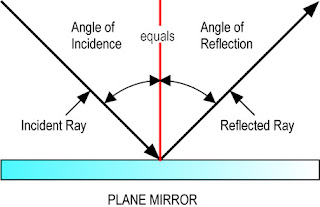

According to the law of reflection, the angle of incidence equals the angle of reflection. The angle of incidence is the angle between this normal line and the incident ray the angle of reflection is the angle between this normal line and the reflected ray. at what angle does the force F6.23i-2.38j+4.92k makes the x-axis arrowforward. Thus, the angle between the incident and the reflected rays is the sum of angle of incidence and angle of reflection, that is, 70 degrees ( 35 + 35 degrees). Since the angle of incidence equals the angle of reflection, the angle between the incident beam of light and the. Note that the force equals zero at exactly 6.4 s. The convention used to express the direction of a light ray is to indicate the angle which the light ray makes with a normal line drawn to the surface of the mirror. The light source starts at the point (6, -8). Reflection involves a change in direction of the light ray. When a ray of light strikes a plane mirror, the light ray reflects off the mirror. Since the angle of incidence is measured between the incident ray and the normal, so, here the angle of incidence is not 60 According to the Law of Reflection, i r Hence, Angle of Reflection 60 Q2: A light ray strikes a reflective plane surface at an angle of 54 with the surface. The angle between an incident ray and the plane mirror is 30°.Multimedia Studios » Ray Optics » The Law of Reflection.The reflection of light is simplified when light is treated as a ray. This law governs the behavior of all waves when they interact with a smooth surface, and therefore describe the behavior of light waves as well. The angle of incidence equals the angle of reflection.
ANGLE OF INCIDENCE EQUALS ANGLE OF REFLECTION... DOWNLOAD
Mark the angle of incidence and angle of reflection on it. The law of reflection states: The angle of reflection, r, equals the angle of incidence, i. Download scientific diagram Specular reflection from the needle. Draw a labelled ray diagram to show the path of the reflected ray corresponding to an incident ray of light parallel to the principal axis of a convex mirror.Draw a ray diagram to show the path of the reflected ray corresponding to an incident ray of light parallel to the principal axis of a convex mirror and show the angle of incidence and angle of reflection on it.How is the reflection of light ray from a plane mirror different from the refraction of light ray as it enters a block of glass?.The incident ray, the reflected ray and the normal at the point of. A vertical ray of light strikes the horizontal surface of some water:(a) What is the angle of incidence?(b) What is the angle of refraction? The laws of reflection The angle of incidence equals the angle of reflection.What happens when a ray of light falls normally (or perpendicularly) on the surface of a plane mirror?.If the angle of reflection is 47.5°, what will be the angle of incidence? Mark the angles of 'incidence' and 'reflection' clearly on the diagram. That means that if our light ray hits a mirror with a 15-degree angle of incidence, it. Thus options c and d are incorrect and a is the correct option. Thus for the reflection of light, the angle of incidence is equal to the angle of reflection. State and explain the laws of reflection of light at a plane surface (like a plane mirror), With the help of a labelled ray-diagram. According to the law of reflection, the angle of incidence is equal to the angle of reflection. According to a law of reflection, on reflection from a surface, the angle that incident light makes with angle is equal to the angle that reflected light makes with the normal. states that the angle of incidence equals the angle of reflection, i r.

The deviation of the ray​ on reflection is? A ray of light falls on a plane mirror forming an angle of 20 degree with the mirror.

The angle of reflection at the second mirror is:(a) 30° (b) 45° (c) 60° (d) 90☍raw a ray-diagram to illustrate your answer.


 0 kommentar(er)
0 kommentar(er)
